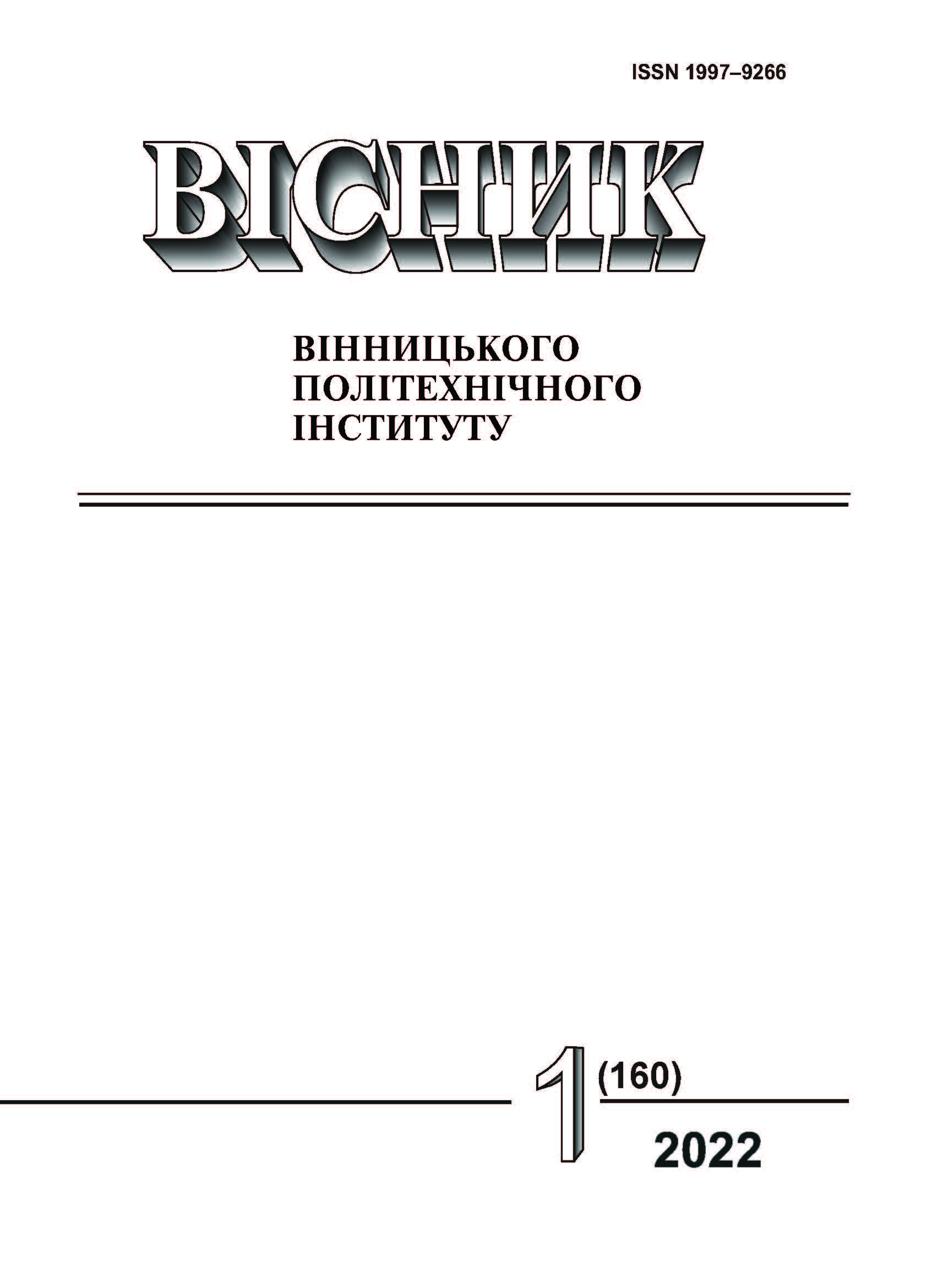Laboratory Studies of the Combined Method of Dehydration by Internal Heat Sources in the Conditions of Electric Heating
DOI:
https://doi.org/10.31649/1997-9266-2022-160-1-21-27Keywords:
drying installations, energy efficiency, fine materialsAbstract
The constant deterioration of the quality of iron ore necessitates the processing of hard-to-enrich minerals that require deep enrichment, and complicates dehydration. Coal processing plants widely use processes carried out in aquatic environments, during which, along with the separation of mineral impurities in the coal remains a significant amount of ballast - water. Therefore, the final operations in the enrichment process are mechanical and thermal dehydration of coal enrichment products, primarily coal concentrates and sludges. The main difficulties are the drying of flotation concentrate (0…0,5 mm) and fine concentrate (0,5…6 mm), which retained after mechanical dehydration residual humidity of 23…27 % and about 13 %, respectively, which necessitates additional heat drying, the quality of coal concentrate, fuel consumption, energy and metal consumption of the process depend on the method and hardware design. The use of thermal drying for humidity adjustment is associated with a sharp increase in investment and consumption of scarce energy, which in today’s raw materials market and the situation in the economy are impractical. Dehydration by filtration on vacuum filters, which has become widespread in concentrators, does not allow obtaining enrichment products with conditioned humidity. At the raised humidity of concentrate expenses for its transportation to the consumer increase, and in the winter time it’s freezing in railway cars is possible. The development of effective methods for drying and heat treatment of dispersed materials is becoming important in practice due to the high requirements for the quality of finished products and the need to move to energy- and resource-saving technologies. Dehydration of sludge sediments is a big problem, because the existing filtration methods are not very suitable for this. Thus, the establishment of patterns of dehydration of finely dispersed materials is an urgent scientific task.
References
А. Д. Полулях, «Особенности современных технологий углеобогащения,» Збагачення корисних копалин, наук.-техн. зб., Дніпропетровськ, вип. 17 (58), с. 3-6, 2003.
В. А. Жужиков, Фильтрование. Теория и практика разделения суспензий, Москва: Химия, 1980, 398с.
С. Э. Фридман, О. К. Щербаков, и А. М. Комлев, Обезвоживание продуктов обогащения, Москва: Недра, 1988, 240 с.
Е. Е. Гарковенко, и др. Особенности флотации и обезвоживания тонкодисперсных углесодержащих материалов, Донецк, Украина: Норд-Пресс, 2002, 266 с.
П. И. Пилов, «Распределение частиц твердой фазы в турбулентном потоке жидкости при выделении осадка,» Науковий вісник НГА України, № 1, с. 74-77, 1998.
А. Д. Полулях, и О. В. Ищенко, «Состояние подготовки и обогащение машинных классов рядового угля в Украине,» Збагачення корисних копалин, наук.-техн. зб., вип. 23 (64), с. 21-26, 2005.
А. С. Кофанов, и др., «Пути снижения влажности флотоконцентрата и тонкого шлама,» Збагачення корисних копалин, наук.-техн. зб., вип. 23 (64), с. 142-146, 2005.
А. В. Лыков, Теория сушки, Москва: Энергия, 1968, 472 c.
Б. С. Сажин, и В. Б. Сажин, Научные основы техники сушки, Москва: Наука, 1997, 448 с.
В. И. Коновалов, Т. Кудра, и Н. Ц. Гатапова, «Новые зарубежные исследования в области сушки и термообработки: результаты и тенденции,» Вестн. Тамб. гос. техн. ун-та, т. 14, № 3, с. 530-537, 2008.
Т. Ф. Киселева, Технология сушки: Учебно-методический комплекс, Кемеровский технологический институт пищевой промышленности, Кемерово, 2007, 117 с.
М. Д. Герасимов, М. П. Покушалов, и А. Л. Покушалов, «Устройство сушки», RU 2459164 C1. 20.08.2012.
К. А. Данилов, Д. Р. Кривошеев, и Е. В. Гусев, «Аппарат для сушки дисперсных материалов», Молодые ученые — развитию текстильно-промышленного кластера, № 1, с. 502-504, 2016.
[14] А. И. Сокольский, Е. В. Гусев, и О. Б. Колибаба, «Условия и конструктивные меры масштабного перехода от лабораторных установок к промышленным образцам при проектировании сушильных агрегатов вихревого типа,» Вестник Ивановского государственного энергетического университета, № 2, с. 22-29, 2020.
С. Ф. Шинкоренко, Е. П. Белецкий, и А. А. Ширяев, Справочник по обогащению руд черных металлов, Москва: Недра, 1980, 482 с.
О. В. Замицький, «Экологически чистый способ доводки тонкодисперсных продуктов обогащения по влажности.» Москва, МГГУ, № 3, с. 82-84, 1995.
О. В. Замицький, «Разработка способа и технических средств доводки по влажности тонкодисперсных продуктов обогащения прямым воздействием переменного электрического тока.» дис. канд. техн. наук., Криворожский технический университет, Кривой Рог, 1995, 29 с.
Downloads
-
pdf (Українська)
Downloads: 196
Published
How to Cite
Issue
Section
License

This work is licensed under a Creative Commons Attribution 4.0 International License.
Authors who publish with this journal agree to the following terms:
- Authors retain copyright and grant the journal right of first publication.
- Authors are able to enter into separate, additional contractual arrangements for the non-exclusive distribution of the journal's published version of the work (e.g., post it to an institutional repository or publish it in a book), with an acknowledgment of its initial publication in this journal.
- Authors are permitted and encouraged to post their work online (e.g., in institutional repositories or on their website) prior to and during the submission process, as it can lead to productive exchanges, as well as earlier and greater citation of published work (See The Effect of Open Access).





